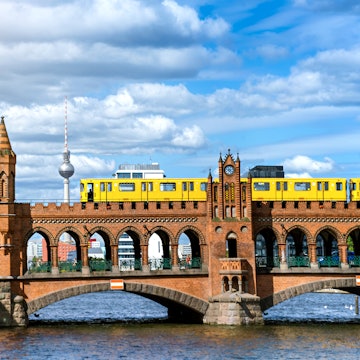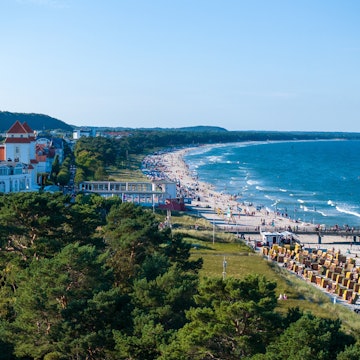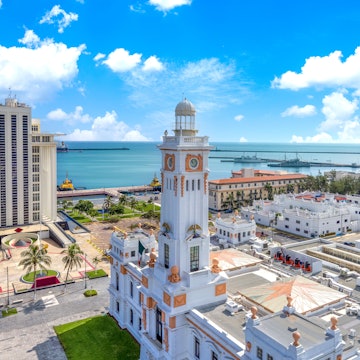

DNA testing gives ordinary people a snapshot of their ancestry © Christina Webb / Lonely Planet
In the era of DNA ancestry services, travel has become inextricably linked with identity more than ever before. With ever-advancing genetic heritage technology provided by the likes of 23andMe, MyHeritage and AncestryDNA, there has been a surge in people across the globe wanting to find out more about their roots. In pursuit of the places that once defined their family’s lives, travelers are now paying homage to their ancestors and taking pilgrimages to destinations based on their results.
On a quest to satiate both wanderlust and curiosity about her ancestry, Lonely Planet writer Christina Webb set out on a voyage of self-discovery.

Why do a DNA test?
As a result of being mixed race, I’ve never looked as if I’m definitively from one place. I'm often quizzed about my ethnicity when traveling, and I’ve had claims that I look like everything from Brazilian to Middle Eastern, Moroccan to Malaysian. However, I’ve tended to see my lineage as a 50/50 split, so I’d often reply to questions with: ‘my mother is Indian and my father is English.’
Don’t get me wrong, I love these kinds of conversations – I’m as curious as the next person about the visible results of genealogy. But still, I hoped that in doing a DNA test I might unearth a conclusive genetic make-up. And perhaps I could finally begin my answer to these questions with, “I am...”

Doing the DNA test … and the results
Undoubtedly a key factor in the growing popularity of DNA kits is the sheer ease of the process. You receive a neat package in the post, and inside, an unassuming collection of containers. After a very quick and seemingly insignificant swab of the insides of your cheeks or by (charmingly) spitting into a vial, you’ll wrap up the almost invisible sample and post it back to the company’s lab for testing. Most results will take between six to eight weeks to arrive.
As the days crept closer to receiving the revelatory email, I found myself daydreaming about what the results might uncover. Then one day, I opened a message to see a colourful infographic with the breakdown of my genealogy, and my heart was pounding. The results were in. It said: 57.8% South Asian, 33.6% Irish, Scottish and Welsh, 4.4% English, 4.2% Eastern European.
Hardly owing any of my genes to England and with a hefty chunk belonging to the Celtic countries was a surprise. Moreover, I would have liked the South Asian section to have been more specific, but, as a result of less data available from people in this part of the world, this may change over time. The one part that really startled me was the last section. Eastern Europe.
How to plan a trip
First things first: pick a manageable region to navigate. One of my best friends and I had been planning to embark on a month-long Interrail trip to Europe. With the entirety of Eastern Europe now firmly on my radar, I was overwhelmed with choice, but we narrowed it down to include a variety of different landscapes. From London we’d fly into Berlin, loop through Poland, the Czech Republic, Slovakia and Hungary, and then run full steam ahead into southeastern countries Serbia, Bosnia and Herzegovina and Croatia before flying home.
We pored over the rail routes available. We purchased a guidebook. We booked an overnight sleeper train and places on a guided hiking tour. Then we took off.
How are you going to travel?
Base your mode of transport on the experiences you’re likely to be catering for; if you’ve managed to trace distant relatives through a DNA service, perhaps having a car would be useful, or you might be able to rely on family to transport you about locally.
I wanted to explore a number of countries and cities in a short space of time, and didn’t have any familial ties in destination, so train travel was ideal. It also allowed us to get a real feel for the landscapes in between, from fields speckled with farmhouses to lived-in suburbia.

Where will you stay?
We opted to stay mostly in hostels; budget-friendly and centrally located, they were perfect bases for us to rest our weary city-worn feet at the end of each day, and they enabled us to meet locals and other travelers. We discovered what drew others to the region – from history to adventure to (of course) cheap beer – and I’ve kept in touch with a number of people since.
In Sarajevo, sitting pretty in a valley cut between deep green mountains, a hostel staff member gave us instructions to track down the best local delicacy, burek (baked filled pastries) and find an oft-overlooked viewpoint over the city, and we learned about sobering personal experiences from the Bosnian War from our mountain guides.
You might also like: Here's how your DNA can open the door to travel
Look further afield
From meandering castle-strewn riversides to sampling shots in vodka bars, we explored pulsing and entrancing cities including Krakow, Prague and Belgrade. But going further afield meant garnering a fuller understanding of the countries.
A short train ride away from some of Prague’s overtouristed spots is nostalgic Český Krumlov; we settled in a wood-panelled hostel, explored the town at a restorative pace, and joined a picnic with locals at sunset. Staying on the tiny island of Šolta off the coast of Croatia, we gave in to a leisurely way of life cycling between sleepy harbours and swimming in whole stretches of isolated coastline. I don’t know if my family had any direct connection with the Holocaust, but visiting Auschwitz-Birkenau from Krakow was an important and heartbreaking stop that I aim never to forget.

What did I take away from the experience?
Uncovering a combination of grandeur and urban grit set against a backdrop of lush forests, a miscellany of places of worship and remnants of a tough recent past: exploring Eastern Europe was fascinating. But it was meeting locals and learning about the realities of their daily life and their ancestors that fulfilled the true essence of my trip. The instinctive need to travel makes us all more diverse genetically, yet similar characteristically, than we might realise.













